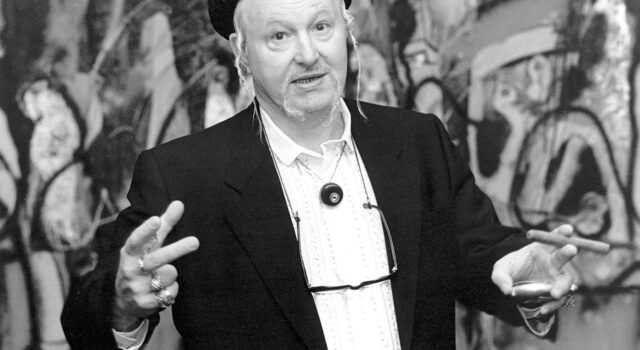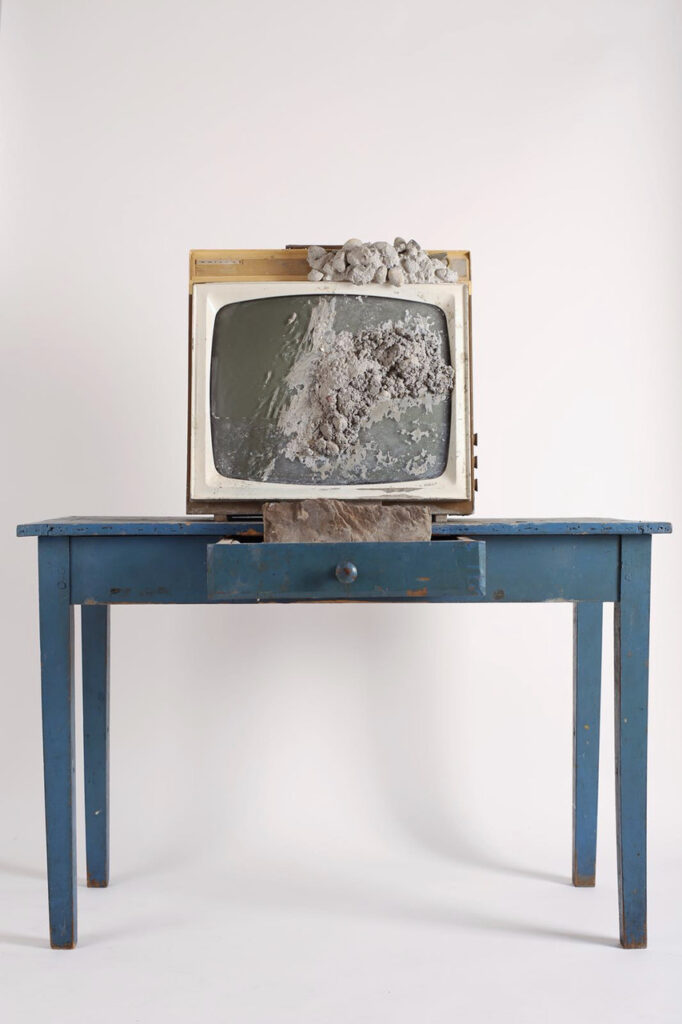Wolf Vostell, born in Leverkusen, was a central figure in 20th-century avant-garde art, shaped by the trauma of World War II and the horrors of the Holocaust—experiences that deeply influenced his artistic vision. Drawing inspiration from everyday life, mass media, and the politics of his time, he became one of the pioneers of Happening and Fluxus, movements that broke traditional boundaries between art and life. His motto “Art is life, life is art” encapsulated his approach, merging social critique with radical experimentation.
Vostell’s body of work spans installation, video art, sculpture, painting, and performance, with a pioneering role in shaping the “Happening” movement—an art form that rejected passive viewing and invited unpredictable, often chaotic participation from the audience. He was among the very first European artists to embrace this radical form in the late 1950s, challenging the static nature of traditional art by blending performance, sound, and physical space into immersive experiences. Equally groundbreaking was his use of television and video as artistic mediums; he incorporated live broadcasts, static, and flickering screens into sculptural works that questioned media manipulation and collective perception. These early installations anticipated the digital age, turning technology into both subject and material at a time when few considered it a legitimate part of fine art. Vostell’s Dé-coll/age technique—tearing and layering visual materials—echoed this disruption, symbolizing fragmentation in a world saturated with information and violence.
Vostell met his wife, Mercedes, in the early 1960s during one of his exhibitions in Spain, marking the beginning of a lifelong personal and artistic partnership. She became an essential force in supporting and preserving his vision, both during his life and beyond. Their shared journey culminated in the founding of the Museo Vostell Malpartida in Extremadura, a region whose rugged landscapes and deep historical roots resonated powerfully with Vostell’s artistic sensibilities. Located in a former wool-washing facility within a nature reserve, the museum reflected his desire to unite art, nature, and daily life. For Vostell, Extremadura symbolized authenticity, silence, and space for reflection—qualities he saw as antidotes to the noise of modern society. The museum remains a vibrant testament to their joint legacy, blending avant-garde experimentation with a profound sense of place.


